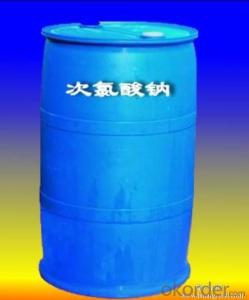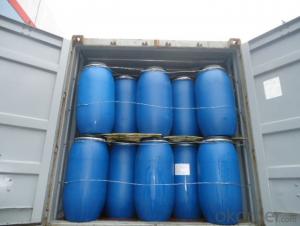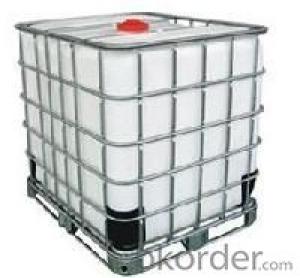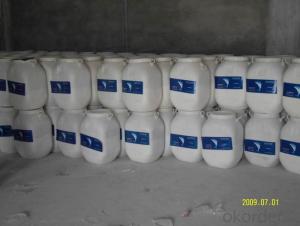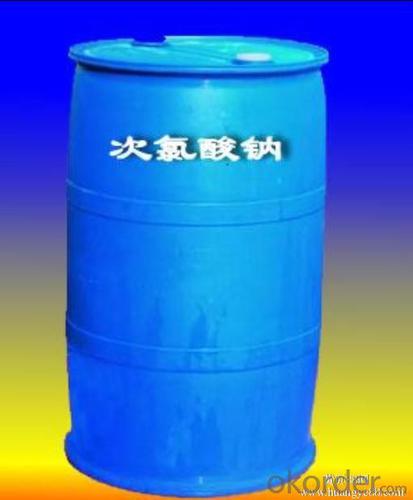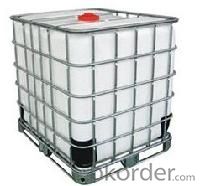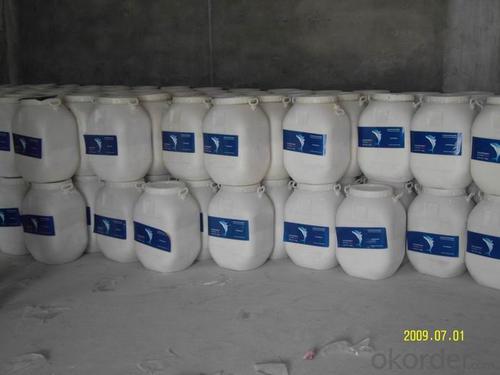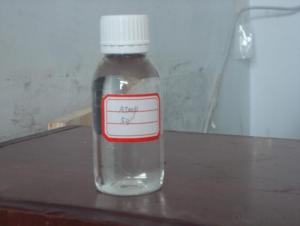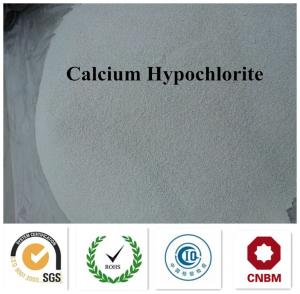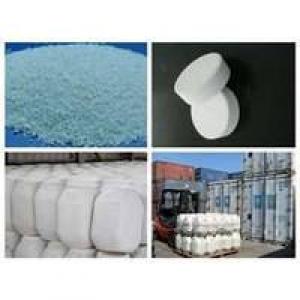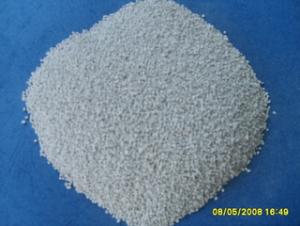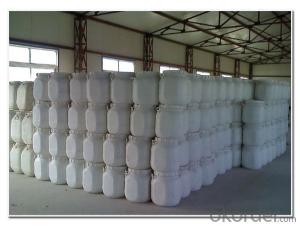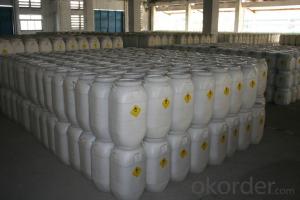Sodium Hypochlorite For Water Treatment
- Loading Port:
- Tianjin
- Payment Terms:
- TT OR LC
- Min Order Qty:
- 25 m.t.
- Supply Capability:
- 6000 m.t./month
OKorder Service Pledge
OKorder Financial Service
You Might Also Like
Sodium Hypochlorite
CAS NO: 7681-52-9
Chemical Formula: NaClO
Molecular Weight: 74.44
Appearance: Yellow transparent Liquid
Standard: HG/T2498-1993
Specification:
Available Chlorine: 8%-16%
NaOH: 1% Max
Transportation Info:
Class: 8 UN NO: 1791 PG:III
Application:
Disinfection for swimming pool, drinking water, cooling tower and sewage and waste water, food, and farming, hospital, school, station and household etc
Good bleaching and oxidation in paper and dye industry.

Normal Packing: 30kg drum, 1200kg IBC Tank
Usage
Used in the water the purification, as well as made the disinfectant, the paper pulp to float waits in vain, in the pharmaceutical industry used the system chloramine and so on.
Why choose us
· 7 years golden supplier for chemicals products
· One of leading chamicals export and import in china
· Large storage in Tianjin port ,china and work with many brother manufacturers
· Total solution for chemicals in china,more products are upgrade
· ISO9001 is approval with high quality
· Free sample and E-catalogue /TS/SDS are available
· 7*24Hr after-sevrice,reply within 1Hr for the emrgency in the working time.
- Q: A biological catalyst or a chemical reaction facilitator is know as a/an?
- I was always taught that it was something best learned by putting forth a bit of effort, reading a bit and embedding the info in your brain so you will remember it always. Just me I guess.
- Q: Biological enzymes and chemical catalysts of the differences in the source, nature and catalytic characteristics of the different, specific point
- Biological enzyme catalytic reaction conditions are mild, high selectivity, can not be infected
- Q: What is the effect of the catalyst in chemistry?
- In fact, the catalyst in the chemical reaction is not the reaction of the role, but to play a role in accelerating the speed of chemical reaction, it is like a reaction to an hour, but joined a certain catalyst, the reaction speed A lot, as long as half an hour to react to play, the catalyst as long as properly handled, but also can be recycled, the students do not have any chemical changes
- Q: What is the maximum impact of the chemical reaction rate? Such as catalyst, temperature, concentration. If you can, you can row order.
- The catalyst certainly affects the most
- Q: Cl + O3 ---> ClO + O2O + ClO ---> Cl + O2= O + O3 ----> 2O2What is the catalyst? The intermediate?How do you know which is which? If the rate law is rate=k [O3] [Cl]determine:a) the overall order.b) unit for k.c) the rate determining step, justify your answer.
- Cl is the catalyst. ClO the intermediate. The catalyst is the component which does not change in overall reaction. He forms some intermediate component(s) with the reactants. In the later reaction steps the intermediate(s) react forming the catalyst in its original state. (a) The overall order is the sum of the orders with respect to the components: n = 1 +1 = 2 (b) the unit of the rate of reaction is r [=] mol/ (Ls) (more general mol per unit time and volume) compare dimensions mol / (Ls) [=] k · mo/L · mol/L =k [=] L/(s mol) (more general unit volume per unit time and mole) (c) First reaction For elementary reaction steps the order of the reaction rate with respect to a reactant is equal to stoichiometric coefficient. Hence the rate of first reaction is: r? = k?·[Cl]·[O?] Overall rate is given by the rate determining step, while other reaction steps are in equilibrium: r = r? = k?·[Cl]·[O?] If second reaction is the rate determine step r? = k?·[O]·[ClO] while reaction 1 is at equilibrium K? = ( [ClO]·[O?] ) / ( [Cl]·[O?] ) =[ClO] = K?·( [Cl]·[O?] ) / [O?] the overall rate would be: r = r? = k?·[O]·[ClO] = K?·k?·[O]·[Cl]·[O?] / [O?] = k·[O]·[Cl]·[O?] / [O?] That doesn't match the observed rate law
- Q: How do I write about the ion equation?
- 4NH3 + 5O2 == 4NO + 6H2O
- Q: Why the catalyst is required to have a large surface area and a rich pore structure
- Because of the chemical reaction, the larger the contact area, the faster the reaction rate, therefore, the catalyst has a large surface area or pore structure, are to increase the contact area of the catalyst and reactants.
- Q: What is the difference between an enzyme catalyst in a living body and a catalyst in chemistry?
- in vivo enzyme activity is regulated in the body, the enzyme activity is regulated control. This is another important feature of the enzyme that distinguishes it from the chemical catalyst. There are many ways to regulate enzyme activity, such as feedback regulation, covalent modification, zymogen activation, allosteric regulation, hormone regulation, and so on.
- Q: okay im doing a project for my classroom about catalyst and i have to draw a picture but when i looked up on google i just saw a bunch of random stuff and a couple were metal so thats why im asking this question. :)
- A catalyst most often is a metal in the form of a screen or sponge with lots of area although it can be an immiscible liquid or sand like particles that can be filtered out.
- Q: Now, i am studying for my biology exam in 3 weeks time...i stumbled upon catalase, and then checked my book its catalyst...now im confused...is there a different among these 2 terms? i think..catalyst is the when a substance brings up or about a chemical reaction without using itself up and then catalase breaks down the toxic by-product of metabolism, hydrogen peroxide, into water and oxygen.Or am i wrong?please explain what is catalyst and catalase in biology or are they the same, just differently?
- Catalysts and catalase are two different things, and the definitions that you listed are correct. A catalyst is something that speeds up the rate of a chemical reaction. Many chemical reactions occur naturally and do not require any energy, but they occur so slowly that they are not useful, and catalysts can be used in cases like this to speed up the process. For example iron metal exposed to oxygen and water turns to rust, but if you need a lot of rust by tomorrow, leaving a chunk of iron out in the rain is not a practical solution because it will take too long to convert all that iron metal into rust.
Send your message to us
Sodium Hypochlorite For Water Treatment
- Loading Port:
- Tianjin
- Payment Terms:
- TT OR LC
- Min Order Qty:
- 25 m.t.
- Supply Capability:
- 6000 m.t./month
OKorder Service Pledge
OKorder Financial Service
Similar products
Hot products
Hot Searches
Related keywords
